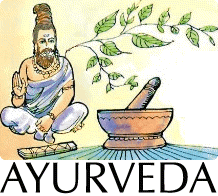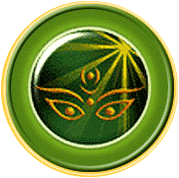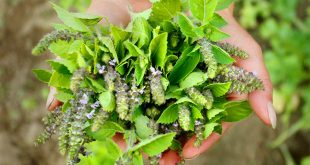 Ayurveda: Introduction — Definition & aim of Ayurveda: The word Ayurveda is a combination of two words AYUR (life) + VEDA (science). Ayurveda is a science, which tells how to live healthy life without affecting nature of a healthy human body: physically, mentally and spiritually.
Ayurveda: Introduction — Definition & aim of Ayurveda: The word Ayurveda is a combination of two words AYUR (life) + VEDA (science). Ayurveda is a science, which tells how to live healthy life without affecting nature of a healthy human body: physically, mentally and spiritually.
“Health cares for healthy one,
Cure of diseased from disease.”
Ayurveda is a wide knowledge of dietary habits, healing by herbal remedies, yoga, meditation, Panchkarma (a rejuvenating & de-toxification therapy) etc. Ayurveda also tells us how external and environmental factors can disturb our health and provides precautionary methods to lead healthy life in changing environment. In Ayurveda the whole life cycle is divided into several parts according to the body growth and social activities.
Today’s life and effect of Ayurvedic Remedies:
At the time when Ayurveda originated everything was natural when the human body responded to its magical ways and was given immediate relief. However, today when the environment is polluted and we are using chemicals every day our immune system is suffering in a big deal unlike the ancient times. However, even today, if we follow wise nature Ayurvedic medicine will still work in treating several chronic diseases.’
Healing in Ayurveda:
Healing process in Ayurveda is based on two procedures:
- Shodhan (Purification and detoxifying process)
- Shaman (Healing process by medical preparation)
 According to Ayurveda stomach is the origin of every kind of illness. Whenever stomach is affected by dietary habits and lifestyle it will first create gastrointestinal problems and convert into a chronic illness later on. That is why shodhan is the most important part in healing before starting any medical preparation. However, remember that shodhan is not to be used for every illness. Shodhan is the procedure of purification and detoxification, which helps to get rid of the routine abdominal problems as well to maintain diet. Panchkarma is the best therapy and a useful part of shodhan. Shaman follows shodhan…
According to Ayurveda stomach is the origin of every kind of illness. Whenever stomach is affected by dietary habits and lifestyle it will first create gastrointestinal problems and convert into a chronic illness later on. That is why shodhan is the most important part in healing before starting any medical preparation. However, remember that shodhan is not to be used for every illness. Shodhan is the procedure of purification and detoxification, which helps to get rid of the routine abdominal problems as well to maintain diet. Panchkarma is the best therapy and a useful part of shodhan. Shaman follows shodhan…
Shodan is the process of healing by medicinal remedies done only the supervision of a qualified doctor (with complete knowledge of all ‘doshas’ vata, pita, kapha as well as desh (country), kaal (time/duration), prakariti (nature of a human body).
According to Ayurveda three main ‘doshas’ are responsible for creating illness after imbalanced dietary habits. They are:
- Vat
- Pita
- Kapha
In these three ‘doshas’ Vat is the major because it carries the remaining ‘doshas’ and circulates in the whole body. Balancing these three ‘doshas’ is the sign of a good health. Whenever these are imbalanced they create dysfunctions in a body. Naadi pariksha is the best way to find out the status of ‘doshas’ in a healthy or unhealthy body. Prakariti (nature of a human body is also decided according to ‘doshas’. Along with these factors ‘desh’ (country) is also important due to the fact that diseases vary from country to country. ‘Kaal’ is also an important factor for the severity of any illness develops according to the three stages:
- Su-sadhaya (Can be easily treated)
- Krich-sadhaya (Difficult to treat)
- A-sadhaya (Can’t be treated)
Thus, we are shown the basic factors useful for any treatment. However, to achieve the best results one needs to go under the professional ayurvedic supervision by a qualified doctor.
 Kids Portal For Parents India Kids Network
Kids Portal For Parents India Kids Network


